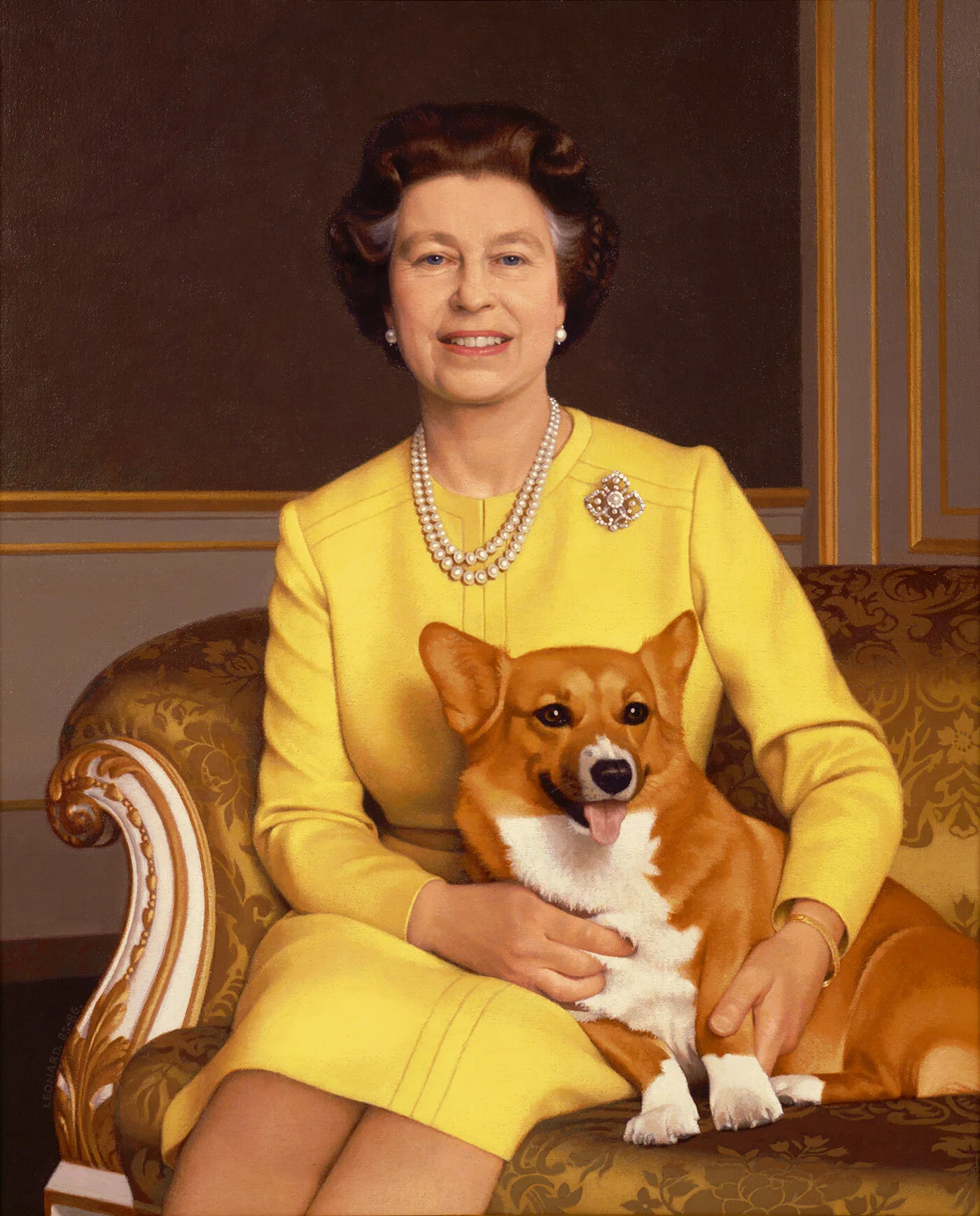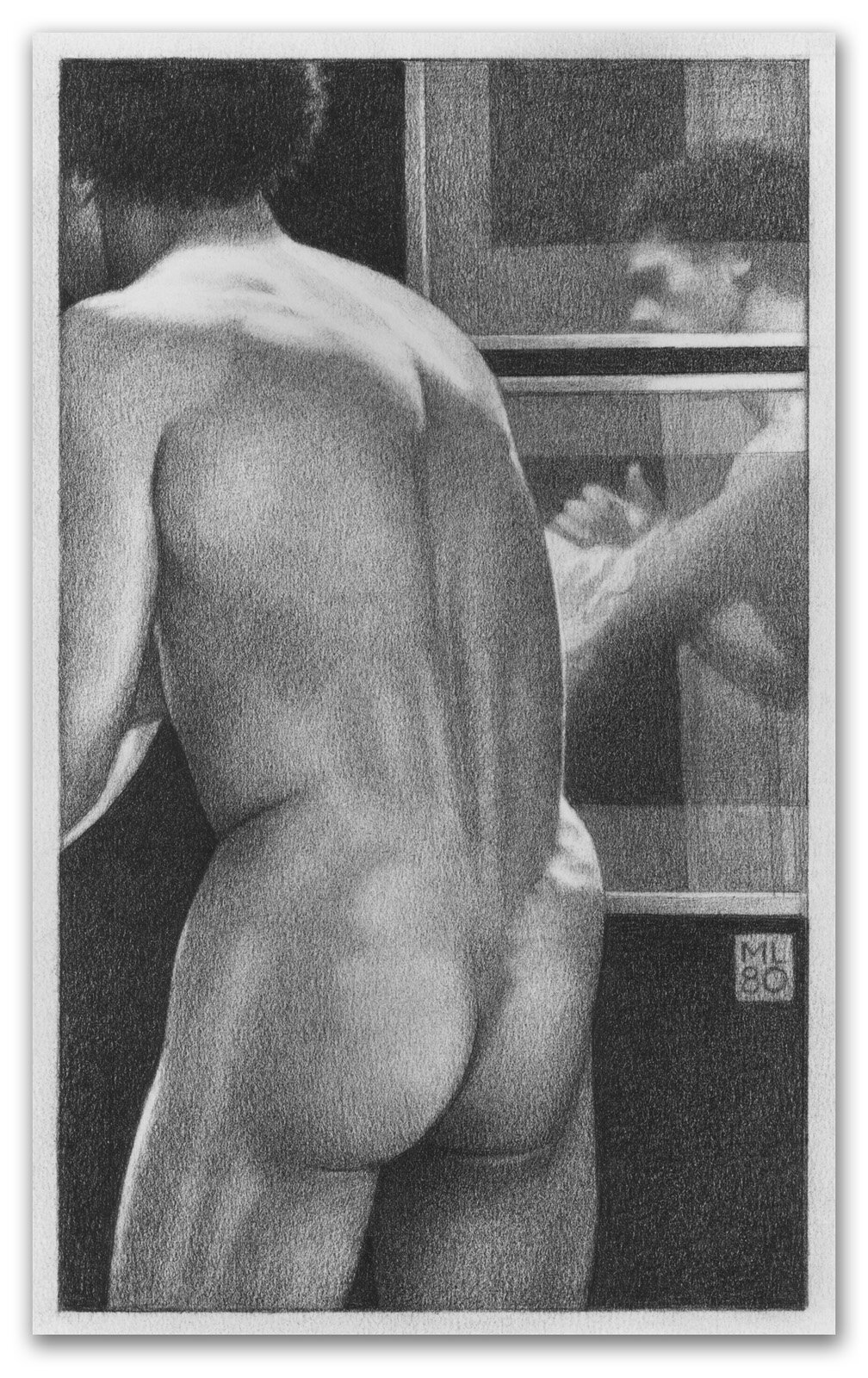PROFILE: Mr Michael Leonard
Changing, 1981, Acrylic on canvas
Painter and Illustrator
Words - Henry Miller
Michael Leonard is one of those artists, acclaimed, well-known yet not famous and somehow mysterious. His name will ring a bell with some people while others will be familiar with his most famous works without knowing who they are by. Many, of course, will know exactly who he is and will be big fans of his work.
Born in India to British parents in 1933, Michael Leonard returned to England in 1945 at the close of the war. After two years of National Service, he went to St Martin’s School of Art in London and studied Commercial Design and Illustration, subjects that at the time, he says, which seemed more likely than fine art to provide him with a viable future. By the time he left Art School in 1957 he was already working as a freelance illustrator and for many years was busy producing artwork for books, magazines, advertising and the press.
The Joy of Gay Sex, 1977, coloured pencil, Silverstein and White
The Joy of Gay Sex, 1977, coloured pencil, Silverstein and White
His commercial work will be familiar to many. Probably his most famous piece appeared on the front cover of the Sunday Times colour supplement in 1981, depicting Margaret Thatcher surrounded by her cabinet ministers. Inspired by a painting of Joan of Arc by the French classical artist Ingres, the illustration wonderfully creates ten highly individual and accurate portraits, whilst at the same time, being extremely witty. Also familiar to some, will be Michael’s sensitive and erotic colour pencil illustrations which appeared in The Joy of Gay Sex, by Charles Silverstein and Edmund White, from 1977.
Her First Year – Margaret Thatcher and her Cabinet, Sunday Times, 1980, acrylic
Throughout the 1970s, Michael continued to work as an illustrator but in tandem developed his career as a painter. He had his first solo show with Fischer Fine Art in 1974, having exhibited in a group show two years earlier. Nearly forty when his life as an exhibiting painter began, at first his pictures tended to be formal, sober and low key. By degrees his work became more animated and colourful. From 1978-1983, in an extraordinary series of work, he depicted scaffolders on a building site across the street from his studio, capturing their unconscious gracefulness, against a backdrop of scaffold and sky. In Changing (1981), for example, workers tug off their shirts in front of the red hoardings of a building site.
Three Scaffolders, 1982/83, acrylic on canvas
Passage of Arms, 1979, acrylic on canvas
In 1985, Michael was commissioned by Readers Digest to paint a portrait of HM Queen Elizabeth II, to celebrate her 60th birthday. Now hanging in the National Portrait Gallery, London, it is probably his best-known work, although not strictly representative of him as an artist. The undoubtedly difficult problem of trying to create a new portrait of the most painted woman in the world, was resolved, in part, by placing her corgi, Spark, in the picture. It creates an informality and warmth, not usually seen in other depictions of the Queen.
HM Queen Elizabeth II, 1985-86, acrylic on canvas
Torso, 2008, Alkd-oil on board
The nude, particularly the male nude, has been a recurring theme in his work. From the 1970s until 2009, Michael repeatedly returned to this theme. Figures are usually on the move or in a state of transition but even when they are at rest, dynamism is provided by the design of the picture. Almost all of his paintings of the nude are based on drawings which, besides being preparatory studies, are ends in themselves. Over a forty-year period, Michael created a truly remarkable collection of pictures in pencil and in paint; pictures of great tenderness and subtlety, which celebrate the human form in all its complexity and with a mastery of technique that is second to none.
Change into White, 1995, Graphite Pencil on paper
Change into White, 1995-96, Alkd-oil on board
“I am fascinated by the subtle interactions of muscle, bone and sinew that come into play as a body moves. A half turn, a shift of balance, sometimes just an intention to move can animate an entire figure…The ordinary actions of every day present endless pictorial potential. Quite unconsciously, a man makes wonderful shapes in the course of pulling on a T-shirt, stepping into a pair of trousers or towelling himself dry after bathing. These shapes often suggest the urgency of sport or the measured grace of dance and every now and again, bring to mind the posture of a memorable figure from a great work of art. With these references in mind, even the most routine activity acquires resonance.” Michael Leonard.
Dressing 43, 1982, Graphite Pencil on paper
It is difficult to highlight the extent and breadth of Michael’s work in this short piece. He created, for example, a series of drawings Portraits in Time, where he transposed contemporary faces to the art of the past, in a highly inventive and playful manner.
A new book examining his entire career, Michael Leonard: Painter and Illustrator, written by Patrick Bade, will be released later in 2020 by Peter Owen Publishing.
Man’s Back and Reflection, 1980, Graphite Pencil on paper
Covered Head, 1989, Graphite Pencil on paper
Previous books containing some of his work are still available on Amazon / Abe Books, including Changing and Changing 2, Published by Gay Men’s Press with forewords by Edward Lucie Smith.
Michael himself, although no longer working as an artist, has spent the last few years developing his own extensive website, which contains further biographical information and the vast majority of his work.
Visit www.michaelleonardartist.com for further information.
Please contact Henry Miller Fine Art for information about buying works by Michael Leonard. www.henrymillerfineart.co.uk
Explore Michael Leonard & Henry Miller further on Instagram.














